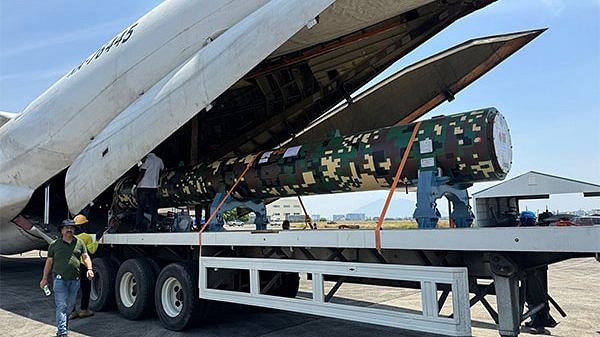The discourse on India’s deepening security engagement in Southeast Asia and the broader Indo-Pacific region often spotlights China’s assertive military posturing and strained ties between the two countries. While China’s activities along the LAC and in the South China Sea, coupled with its growing military presence in the Indian Ocean region, have indeed compelled India to adopt a more proactive security stance, New Delhi’s longstanding security and military engagements in Southeast Asia cannot be ignored. Southeast Asia’s increasing prominence necessitates a greater role in regional affairs, a trajectory evident since the launch of the Act East Policy in 2014.
China’s handling of its relations with India has prompted New Delhi to reassess its strategic priorities, driving it to aspire to play a more substantial role in regional dynamics, particularly as an effective counterbalance to China. A recent notable example of India’s pivotal role in maintaining regional stability occurred on 19 April, with the delivery of BrahMos supersonic cruise missiles, jointly developed by India’s DRDO and Russia’s NPO Mashinostroyeniya, to the Philippines as part of a 2022 agreement totaling US$ 375 million.
Chinese Defense Ministry spokesperson Wu Qian responded by stating, “China always believes that defence and security cooperation between countries should not harm the interest of any third party and should not harm regional peace and stability.” China’s response to the India-Philippines defence cooperation was more subdued compared to its reaction to the US deploying mid-range missiles to the Philippines’ Luzon. Adopting a hardline stance then, Wu stated, “The US move severely threatens the security of regional countries and undermines regional peace and stability. China will take resolute countermeasures.”
The procurement of BrahMos missiles by the Philippines, nonetheless, signifies a substantial advancement in its coastal defence capabilities, presenting a significant deterrent against potential threats from China. Beyond this immediate benefit, it displays a noteworthy milestone in the deepening defence cooperation between India and the Philippines. During his visit to the Philippines in March 2024, India’s External Affairs Minister S Jaishankar reaffirmed “India’s support for the Philippines in upholding its national sovereignty.” India is also deploying a defence attaché to its embassy in Manila.
The delivery of BrahMos missiles to the Philippines has bolstered India’s aspirations for a more assertive security role in the region, enhancing its credibility as a reliable security partner and potentially positioning it as a significant arms exporter amid escalating tensions in the South China Sea. The Russia-Ukraine conflict underscored India’s vulnerability due to reliance on Russia for arms supplies, particularly amid China-Russia proximity and ongoing border tensions. Such developments prompt India to reassess its traditional role as an arms importer and contemplate greater self-sufficiency in defence production.
Also read: China is silent on the Middle East crisis. It has a new friend to appease
India: A reliable security provider
India’s reputation has undergone a significant transformation in recent years, shifting from being perceived as a weak link and an unreliable partner to actively positioning itself as a reliable security provider. This transformation is driven by two key factors: the need for collective responses to China’s assertiveness and the desire to be a responsible stakeholder on the global stage. Notable examples include the expansion of India-led Malabar exercises, active participation in the Quad, and deepening security and defence cooperation with regional countries.
Recognising China as a primary security threat has prompted a profound shift in India’s strategic priorities. This acknowledgment has not only reshaped India’s stance towards China but also influenced its broader regional perspective, positioning it as a responsible power in the Indo-Pacific and a key player globally. China’s assertive behaviour inadvertently reinforced India’s strategic posture, leading it to enhance defence capabilities and redefine its regional role and partnerships. Waning trust in China, fuelled by its revisionist policies, has created a vacuum in the regional security landscape.
While the US has traditionally been perceived as the primary security provider in the region, recent events such as the Russia-Ukraine war and tensions in the Middle East have cast doubt on its commitment to the Indo-Pacific. India’s significance in addressing these challenges cannot be overstated. Consequently, these developments have led the US and other stakeholders to increasingly turn to India for greater security engagement, coinciding with India’s growing recognition of its security responsibilities and willingness to fulfil them.
Also read: US-Japan-Philippines trilateral isn’t just about development. China is at its core
China is a binding factor
It is intriguing how China, once regarded as a friendly country, has now emerged as a catalyst prompting India and the Philippines to cooperate in ensuring collective security. China’s miscalculation lies in underestimating the agency and capabilities of both countries, treating them as economically and militarily inferior, and inadvertently pushing them into forming coalitions where China finds itself at the centre.
China’s assertiveness in the South China Sea, Taiwan Strait, and along the LAC has ignited a rapid arms race in the Indo-Pacific. However, it has also facilitated the formation of unprecedented partnerships where China is increasingly recognised as a disruptive force. This trend is irreversible now. China is to blame for turning Southeast Asia into a geopolitical theatre, as India and the Philippines have merely sought to safeguard their territorial integrity.
China must reconsider its perspective on India and Southeast Asia, viewing them not as mere pawns in the US strategy to contain China, but as sovereign countries with agency. Stability and peace in the region can only be achieved when China ceases its aggressive actions in the South China Sea, Taiwan Strait, and the LAC.
Sana Hashmi is a fellow at the Taiwan Asia Exchange Foundation. She tweets @sanahashmi. Views are personal.
(Edited by Prashant)



